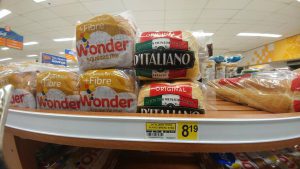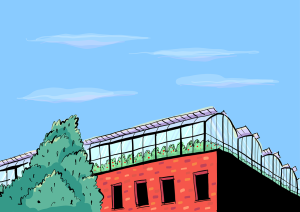
People & Culture
Nunavut gets failing grade on food security
Conference Board of Canada’s food report card highlights problems territory’s residents have feeding themselves
- 548 words
- 3 minutes
This article is over 5 years old and may contain outdated information.
Science & Tech

Things that usually clutter Facebook newsfeeds: cat videos, Instagram pics and party invitations. And increasingly, at least in Nunavut’s capital city, caribou carcasses.
In a startling shift away from the long-rooted Inuit custom of sharing food among families, a growing number of opportunistic northerners are instead using Facebook to sell their traditional food.
Iqaluit Sell/Swap, an open group on the popular social networking site, serves primarily as a convenient place to auction off old children’s clothes or fix-er-up cars. But lately, some members have been offering up bounty from their latest hunting trip such as caribou or arctic char — for a price.
It’s an avarice born of desperation.
Warmer winters have led to unpredictable and dangerous ice conditions, taking their toll on traditional hunting. For Inuit who don’t have the money to supplement the shortages with store-bought food this means long months of never-full stomachs and mental stress.
The winter of 2010/2011 was particularly hard. McGill graduate student Sara Statham, 24, wanted to find out how vulnerable the climatic changes (freeze-up came about two months later than average) would leave the impoverished neighbourhoods in Iqaluit. At the International Polar Year conference in Montreal this week, Statham presented her findings.
In addition to the strained sharing networks — which is the Inuit’s traditional way of dealing with food shortages – she discovered that 54 percent of publicly-owned households did not have enough money to buy store food and could not get country food. Previously, only 46 percent of households had reported the same.
“One week… we had no food. We only had one dried noodle pack for 4 people. We can’t live like that,” Statham recalls the mother of one young Inuit family telling her. However, Statham said she found that while environmental changes had some impact on the vulnerability of Iqaluit’s poor, there were larger socio-economic issues that were affecting food insecurity. Food and water insecurity have been highlighted at the conference as one of the major issues facing northern communities.
Are you passionate about Canadian geography?
You can support Canadian Geographic in 3 ways:

People & Culture
Conference Board of Canada’s food report card highlights problems territory’s residents have feeding themselves

People & Culture
Here are a few of the ways community-led projects, government programs and other organizations are helping to feed northern populations

Environment
Already gaining steam before the pandemic, interest in urban farming — and hunger for hyper-local food — has soared. A look at three Canadian takes on the urban farming phenomenon

Science & Tech
As geotracking technology on our smartphones becomes ever more sophisticated, we’re just beginning to grasps its capabilities (and possible pitfalls)